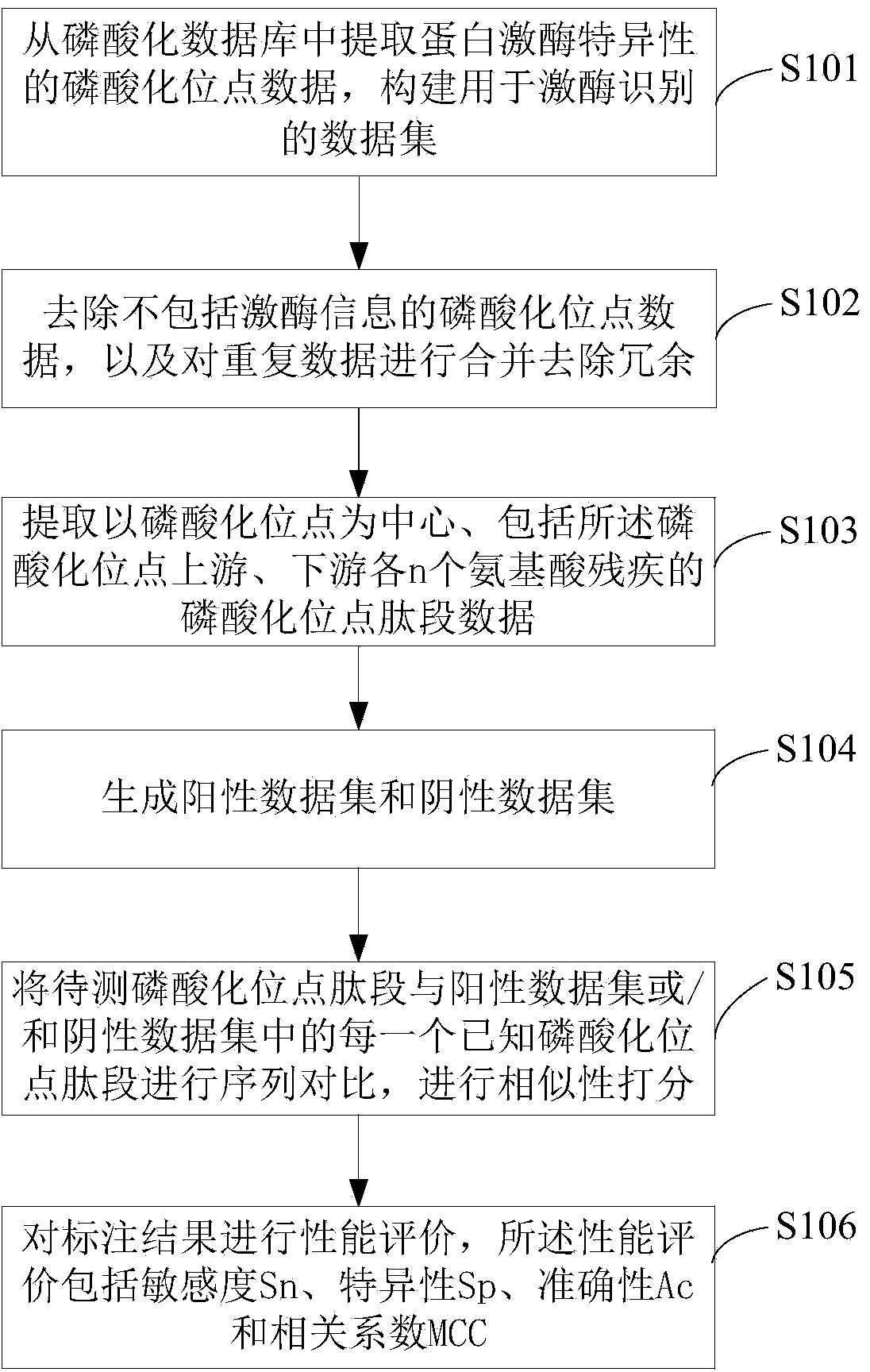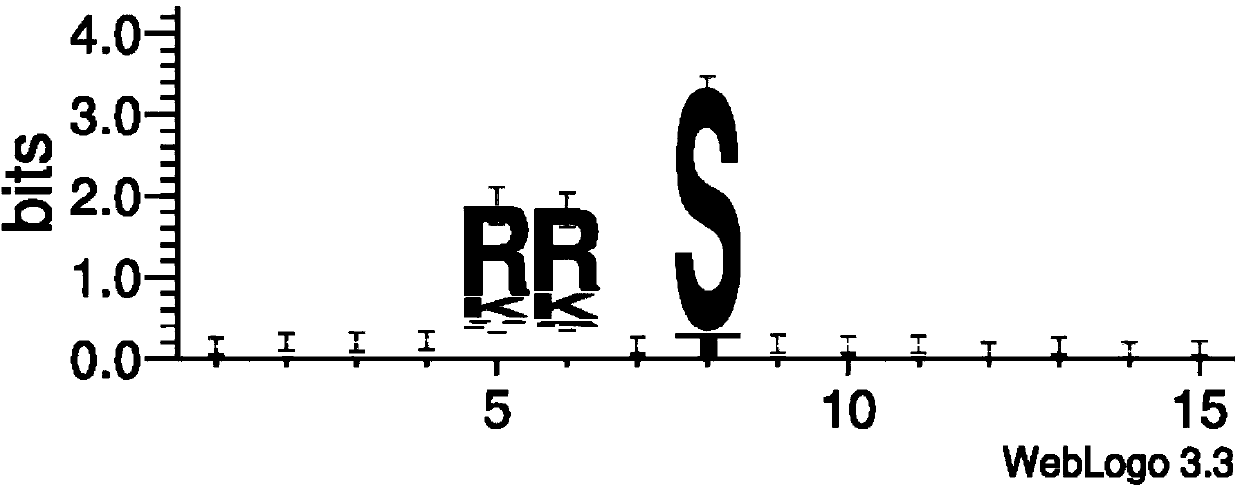Protein kinase specificity prediction method and device based on nearest neighbor algorithm
A protein kinase and prediction method technology, applied in the field of protein modification site recognition, can solve the problems of low sensitivity and specificity prediction accuracy, and achieve the effect of improving sensitivity and specificity, and increasing accuracy
- Summary
- Abstract
- Description
- Claims
- Application Information
AI Technical Summary
Problems solved by technology
Method used
Image
Examples
Embodiment 1
[0051] Embodiment 1 of the present invention provides a protein kinase specificity prediction method based on the nearest neighbor algorithm, which is used to mark the phosphorylation sites of different protein kinase families, such as figure 1 As shown, the method includes the following steps:
[0052] Step S101: extract protein kinase-specific phosphorylation site data from the phosphorylation database, and construct a data set for kinase identification;
[0053] In this example, the phosphorylation database is Phospho.ELM9.0.
[0054] Step S102: removing phosphorylation site data that does not include protein kinase information from the data set used for kinase identification, and merging duplicate data to remove redundancy;
[0055] Step S103: Extract phosphorylation site peptide data for each phosphorylation site in the data set, the phosphorylation site peptide is centered on the phosphorylation site, including upstream and downstream of the phosphorylation site n amin...
Embodiment 2
[0070] Embodiment 2 of the present invention provides a device for predicting protein kinase specificity based on the nearest neighbor algorithm, which is used to mark the phosphorylation sites of different protein kinase families, such as figure 2 As shown, the device includes: a database extraction module 100 , a preprocessing module 200 , a phosphorylated peptide generation module 300 , a data set generation module 400 , a sequence comparison module 500 and an evaluation module 600 .
[0071] Wherein, the database extraction module 100 is used to extract protein kinase-specific phosphorylation site data from the phosphorylation database, and constructs a data set for kinase identification; the preprocessing module 200 is used for kinase identification constructed by the database extraction module. Phosphorylation site data that does not include protein kinase information is removed from the data set; and duplicate data is merged to remove redundancy; the phosphorylated pept...
PUM
 Login to View More
Login to View More Abstract
Description
Claims
Application Information
 Login to View More
Login to View More - R&D
- Intellectual Property
- Life Sciences
- Materials
- Tech Scout
- Unparalleled Data Quality
- Higher Quality Content
- 60% Fewer Hallucinations
Browse by: Latest US Patents, China's latest patents, Technical Efficacy Thesaurus, Application Domain, Technology Topic, Popular Technical Reports.
© 2025 PatSnap. All rights reserved.Legal|Privacy policy|Modern Slavery Act Transparency Statement|Sitemap|About US| Contact US: help@patsnap.com



